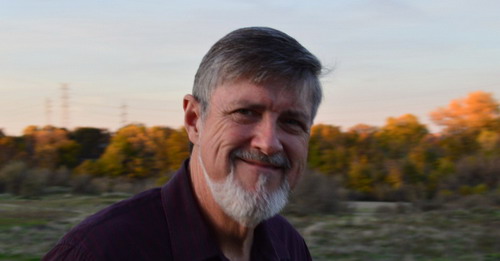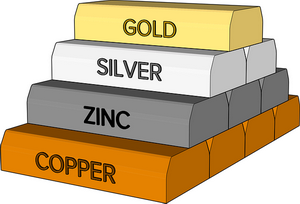 The last newsletter discussed the importance of adequate stomach acid in order to break down proteins into amino acids as well as to ionize minerals so they can be absorbed. Today I wish to focus on one of those minerals, zinc. Zinc is not one of the glamour minerals, like calcium or
iron, that gets a lot of attention, but it is probably involved in more vital processes in the body than any other mineral. We all know how important calcium is for bones and nerve transmission and the iron in the red blood cells for carrying oxygen to all the tissues of the body. So what is zinc good for? I usually tell patients that zinc is required for over 300 different chemical reactions in the body, but that doesn't really say much to
people. So let's create a functional list.
The last newsletter discussed the importance of adequate stomach acid in order to break down proteins into amino acids as well as to ionize minerals so they can be absorbed. Today I wish to focus on one of those minerals, zinc. Zinc is not one of the glamour minerals, like calcium or
iron, that gets a lot of attention, but it is probably involved in more vital processes in the body than any other mineral. We all know how important calcium is for bones and nerve transmission and the iron in the red blood cells for carrying oxygen to all the tissues of the body. So what is zinc good for? I usually tell patients that zinc is required for over 300 different chemical reactions in the body, but that doesn't really say much to
people. So let's create a functional list.
 Zinc is the second most common trace mineral in the body after iron. It is in every cell of the body. This is because it is required for both the formation of your DNA and the expression of that DNA. Your DNA is the blueprint for your body and expression of that blueprint means what part of the
blueprint is being read and moved into protein manufacture at each minute. The actual manufacture of proteins requires zinc and proteins are the building blocks that we are made from. Our DNA contains instructions for making over 3000 proteins that contain zinc. Additionally, there are 300 different enzymes that require zinc to function. Enzymes are the tiny machines inside us that either build or break down the protein structures we are made of. As such, zinc
becomes vital for our growth and repair processes.
Zinc is the second most common trace mineral in the body after iron. It is in every cell of the body. This is because it is required for both the formation of your DNA and the expression of that DNA. Your DNA is the blueprint for your body and expression of that blueprint means what part of the
blueprint is being read and moved into protein manufacture at each minute. The actual manufacture of proteins requires zinc and proteins are the building blocks that we are made from. Our DNA contains instructions for making over 3000 proteins that contain zinc. Additionally, there are 300 different enzymes that require zinc to function. Enzymes are the tiny machines inside us that either build or break down the protein structures we are made of. As such, zinc
becomes vital for our growth and repair processes.
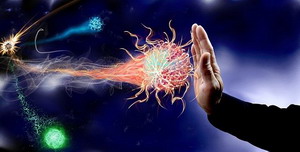 Echoing that last thought is the vital role zinc plays in our immune system and in wound healing. This has been highlighted lately with the pandemic with low zinc levels in patients being one of the risk factors for poor outcomes. Most of you are familiar with zinc lozenges for treating colds and flu.
Zinc supplementation reduces the chances of infection and improves immune response. Studies show supplementation of 80 to 90 mg per day reduces recovery time from the common cold by 33%. In older folks, a mere 45 mg of zinc per day decreased their chance of getting an infection in the first place by 66%. These would be short term loads of zinc supplementation. I would not take more than about 20 mg of chelated zinc per day regularly due to the unbalancing effect larger
doses have on copper levels.
Echoing that last thought is the vital role zinc plays in our immune system and in wound healing. This has been highlighted lately with the pandemic with low zinc levels in patients being one of the risk factors for poor outcomes. Most of you are familiar with zinc lozenges for treating colds and flu.
Zinc supplementation reduces the chances of infection and improves immune response. Studies show supplementation of 80 to 90 mg per day reduces recovery time from the common cold by 33%. In older folks, a mere 45 mg of zinc per day decreased their chance of getting an infection in the first place by 66%. These would be short term loads of zinc supplementation. I would not take more than about 20 mg of chelated zinc per day regularly due to the unbalancing effect larger
doses have on copper levels.
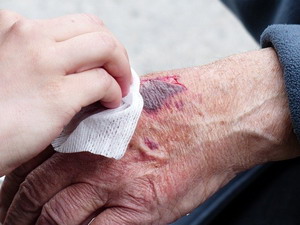 Similarly, low zinc levels produce wounds that refuse to heal. Zinc is commonly used in hospitals as a treatment for burns and ulcers as zinc is needed for the formation of collagen, the main element our skin is made from. Since zinc is essential for the formation of our white blood cells for fighting
infection, obviously it is needed for wound healing. In fact, zinc is for all sorts of skin-related issues. It is widely used to treat acne. Zinc is needed for the production of melanin in the skin, which gives our skin color. It is also essential for hair production, so if your hair is falling out, it might be a zinc deficiency.
Similarly, low zinc levels produce wounds that refuse to heal. Zinc is commonly used in hospitals as a treatment for burns and ulcers as zinc is needed for the formation of collagen, the main element our skin is made from. Since zinc is essential for the formation of our white blood cells for fighting
infection, obviously it is needed for wound healing. In fact, zinc is for all sorts of skin-related issues. It is widely used to treat acne. Zinc is needed for the production of melanin in the skin, which gives our skin color. It is also essential for hair production, so if your hair is falling out, it might be a zinc deficiency.
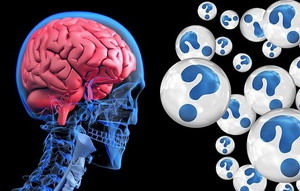 How about zinc and the brain? 90% of people diagnosed with depression, behavior disorders, ADHD, autism, and schizophrenia all show depleted levels of zinc in their blood plasma. Zinc deficiency is the most commonly observed chemical imbalance in mental
health disorders. Zinc fights inflammation and free radicals, which are the drivers of brain dysfunctions such as memory loss/ dementia and movement disorders like Parkinson's.
How about zinc and the brain? 90% of people diagnosed with depression, behavior disorders, ADHD, autism, and schizophrenia all show depleted levels of zinc in their blood plasma. Zinc deficiency is the most commonly observed chemical imbalance in mental
health disorders. Zinc fights inflammation and free radicals, which are the drivers of brain dysfunctions such as memory loss/ dementia and movement disorders like Parkinson's.
 Here is a classic importance of zinc – the formation of testosterone. Testosterone is the hormone that tells your body to build muscle in both men and women. Hey guys, your “Low T” may really be low zinc. Absorption of zinc decreases with age (mostly because of decreasing
hydrochloric acid levels) and this is seen in the decreasing amount of muscle in older individuals. Even something as specific as Age-related Macular Degeneration of the eyes is related to zinc deficiency.
Here is a classic importance of zinc – the formation of testosterone. Testosterone is the hormone that tells your body to build muscle in both men and women. Hey guys, your “Low T” may really be low zinc. Absorption of zinc decreases with age (mostly because of decreasing
hydrochloric acid levels) and this is seen in the decreasing amount of muscle in older individuals. Even something as specific as Age-related Macular Degeneration of the eyes is related to zinc deficiency.
 So how common is zinc deficiency? It is estimated that just from lack of dietary intake of sufficient zinc over 2 billion people worldwide are deficient. Worst of all, because of how essential zinc is for the immune system, zinc deficiency is believed to be responsible for 450,00 deaths of
children under the age of 5 every year.
So how common is zinc deficiency? It is estimated that just from lack of dietary intake of sufficient zinc over 2 billion people worldwide are deficient. Worst of all, because of how essential zinc is for the immune system, zinc deficiency is believed to be responsible for 450,00 deaths of
children under the age of 5 every year.
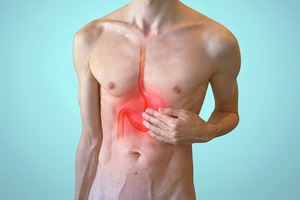 How else do we end up deficient in zinc? Any sort of bowel disorder that reduces nutrition absorption such as Crohn's disease or other chronic diarrhea conditions will cause deficiency. Alcoholism will cause it. We have already written about low HCl problems in the stomach, which is becoming
super common with the widespread use of acid blocker medications. Any immune-suppressing medications can cause low zinc levels. Being vegan or vegetarian can induce low zinc levels as can chronic kidney disease. Even pregnancy and breastfeeding will deplete your zinc as this important nutrient gets sent to the growing baby.
How else do we end up deficient in zinc? Any sort of bowel disorder that reduces nutrition absorption such as Crohn's disease or other chronic diarrhea conditions will cause deficiency. Alcoholism will cause it. We have already written about low HCl problems in the stomach, which is becoming
super common with the widespread use of acid blocker medications. Any immune-suppressing medications can cause low zinc levels. Being vegan or vegetarian can induce low zinc levels as can chronic kidney disease. Even pregnancy and breastfeeding will deplete your zinc as this important nutrient gets sent to the growing baby.
 Now an important consideration that has to be brought up is copper. Zinc and copper have a very important relationship. They need to be in a specific ratio in the body for health. The ideal ratio according to some authorities is 8 to 1 zinc to copper. Of particular note, however, is taking high
levels of zinc (like 50mg per day) will inhibit copper absorption and cause copper deficiency. This is a problem as many of the benefits are similar to those of zinc but as separate and equally necessary pathways. Copper is required for the formation of red blood cells, brain tissue, connective tissue and collagen, immune function, nerve sheath formation, melanin production, cellular energy creation, and the formation of neurotransmitters that control how you feel and think. In
fact, a 2011 study of people who are over 100 years old found that only 2 trace minerals were associated with long life – zinc, and copper.
Now an important consideration that has to be brought up is copper. Zinc and copper have a very important relationship. They need to be in a specific ratio in the body for health. The ideal ratio according to some authorities is 8 to 1 zinc to copper. Of particular note, however, is taking high
levels of zinc (like 50mg per day) will inhibit copper absorption and cause copper deficiency. This is a problem as many of the benefits are similar to those of zinc but as separate and equally necessary pathways. Copper is required for the formation of red blood cells, brain tissue, connective tissue and collagen, immune function, nerve sheath formation, melanin production, cellular energy creation, and the formation of neurotransmitters that control how you feel and think. In
fact, a 2011 study of people who are over 100 years old found that only 2 trace minerals were associated with long life – zinc, and copper.
 In excess, copper can be a big problem. Most excess comes in the form of inorganic copper from copper water pipes, inorganic copper supplements, zinc deficiency, copper cookware, gall bladder lack or congestion, hormone replacement therapy, and strangely copper IUDs. About 17% of depressed patients show
elevated copper levels. This type of copper can pass the blood-brain barrier and create inflammation in the brain, which triggers depression. The easiest way to test for this is with a lab test for copper levels in the blood serum. Other symptoms of copper toxicity may include anxiety, poor focus, fatigue, insomnia, low blood pressure, ringing in the ears, skin sensitivity, intolerance to estrogen, shellfish, and chocolate, and hyperactivity in children.
In excess, copper can be a big problem. Most excess comes in the form of inorganic copper from copper water pipes, inorganic copper supplements, zinc deficiency, copper cookware, gall bladder lack or congestion, hormone replacement therapy, and strangely copper IUDs. About 17% of depressed patients show
elevated copper levels. This type of copper can pass the blood-brain barrier and create inflammation in the brain, which triggers depression. The easiest way to test for this is with a lab test for copper levels in the blood serum. Other symptoms of copper toxicity may include anxiety, poor focus, fatigue, insomnia, low blood pressure, ringing in the ears, skin sensitivity, intolerance to estrogen, shellfish, and chocolate, and hyperactivity in children.
 On the other hand, deficiency of copper can cause anemia, intense mid-day fatigue, loss of coordination, cognitive decline, graying or loss of hair, feeling cold, low thyroid function, and low white blood count. Since zinc and copper affect each other, an excess of one can cause a deficiency of the other.
On the other hand, deficiency of copper can cause anemia, intense mid-day fatigue, loss of coordination, cognitive decline, graying or loss of hair, feeling cold, low thyroid function, and low white blood count. Since zinc and copper affect each other, an excess of one can cause a deficiency of the other.
 We have a simple test for zinc levels available in the office for free. It is a taste test. Copper testing has to be done through a lab, but simply tasting a couple of teaspoons of zinc solution will tell you where you stand. Just swish the sample around in your mouth for 10 seconds and see how the
solution tastes. If you have a serious deficiency, the solution will taste like plain water or even sweet. A mild to moderate deficiency will taste dry and cottony. The worse the solution tastes the better your zinc levels are. Considering how important zinc is to your system, I would check out this simple test. If you have symptoms of copper excess or deficiency then a lab test is in order. I have seen them available through online lab services such as this
one.
We have a simple test for zinc levels available in the office for free. It is a taste test. Copper testing has to be done through a lab, but simply tasting a couple of teaspoons of zinc solution will tell you where you stand. Just swish the sample around in your mouth for 10 seconds and see how the
solution tastes. If you have a serious deficiency, the solution will taste like plain water or even sweet. A mild to moderate deficiency will taste dry and cottony. The worse the solution tastes the better your zinc levels are. Considering how important zinc is to your system, I would check out this simple test. If you have symptoms of copper excess or deficiency then a lab test is in order. I have seen them available through online lab services such as this
one.
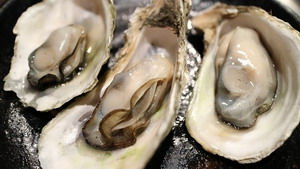 So where do we get these essential minerals in our diet? For zinc, we are mainly talking about meat, eggs, shellfish, nuts, seeds, legumes, and dairy foods. For organic copper, we are looking at foods like liver, oysters, spirulina, shiitake mushrooms, nuts, seeds, and lobster. Generally, fruits and
vegetables are poor sources of these nutrients. Avoid vitamin supplements that add in inorganic copper, like copper sulfate.
So where do we get these essential minerals in our diet? For zinc, we are mainly talking about meat, eggs, shellfish, nuts, seeds, legumes, and dairy foods. For organic copper, we are looking at foods like liver, oysters, spirulina, shiitake mushrooms, nuts, seeds, and lobster. Generally, fruits and
vegetables are poor sources of these nutrients. Avoid vitamin supplements that add in inorganic copper, like copper sulfate.
This gives you deeper information for taking control of your health and mood. These minerals play a big role in how well you are able to feel.
Take care,
David
Ellen update:
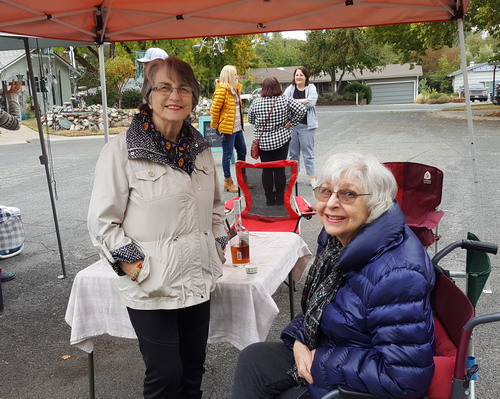 We had our neighborhood Octoberfest last weekend. We were a bit weather challenged and had to huddle up under the two canopies during the major downpours, but comradery prevailed. Our little neighborhood gets together twice a year to welcome any new people to the hood and generally catch up on each others lives. It is nice to come home each day and wave hi to the folks living around you.
We had our neighborhood Octoberfest last weekend. We were a bit weather challenged and had to huddle up under the two canopies during the major downpours, but comradery prevailed. Our little neighborhood gets together twice a year to welcome any new people to the hood and generally catch up on each others lives. It is nice to come home each day and wave hi to the folks living around you.
